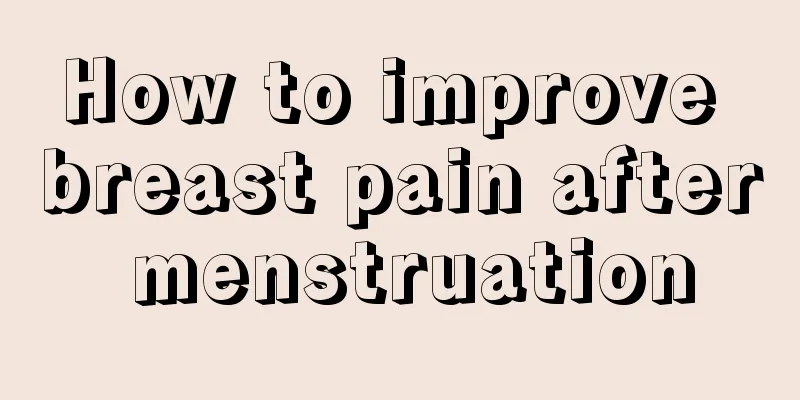Learn some “little tricks” and say goodbye to “mommy hands”.

|
What is "Mom's Hand"? The medical term for "mom's hand" is radial styloid stenosing tenosynovitis, which is caused by long-term exertion leading to inflammation of the radial styloid tendon sheath, which causes compression of the tendon and causes pain when bending the wrist toward the little finger. Because it often occurs in new mothers who hold their babies for a long time after giving birth, it is also called "mom's hand". Why does "mom's hand" occur? The tendon repeatedly slides and rubs in the tendon sheath, or due to inflammation, rheumatism, suppurative infection, etc., it causes inflammation of the tendon sheath, exudation and swelling in the synovial cavity, resulting in a decrease in the volume of the tendon sheath, compression of the tendon, and local inflammation stimulation causing pain.
1. Pain in the radial styloid process of the wrist, with obvious pain when the thumb and wrist joint move, especially when the wrist is flexed toward the little finger and the pain worsens. 2. There is obvious tenderness, and sometimes a protrusion like a bony nodule can be felt at the painful point, and the movement of the thumb is limited. 3. Activities such as lifting heavy objects, twisting towels, and carrying things are restricted, inducing pain. Which group of people are prone to "mommy hand"? "Mom's hand" does not only occur in new mothers. It is more common in people aged 30 to 50 years old and those who often need to use their thumbs. However, the incidence rate is higher in women, 10 times that of men. In addition to mothers who often hold babies, hairdressers, teachers, porters, typists and other people who use computers for a long time, as well as patients with rheumatoid arthritis are also prone to it. Recently, there are also many people who have "mom's hand" caused by long-term use of mobile phones and computers. What should you do if you get “mommy hand”? 1. Reduce or stop the movement of the wrist and thumb, and wear a brace if necessary. 2. Therapy with physical factors such as heat therapy, low frequency, ultrasound, etc. In severe cases, oral anti-inflammatory and analgesic drugs can be used. 3. Shock wave therapy: It can reduce inflammation, swelling, loosen adhesions, and promote injury repair. 4. Functional exercise: training with the maximum range of motion within the pain-free range. ●Flex your wrist towards your palm and hold it in the maximum position for 5 seconds. Do this 3 sets a day, 10 times each set. ● Stretch your wrist toward the back of your hand and hold the position for 5 seconds at the maximum position. Do this 3 times a day, 10 times per set. ●Ulnar deviation and radial deviation, move the wrist toward the thumb and little finger side of the hand, hold the position for 5 seconds at the maximum, 3 sets a day, 10 times each set. ●Wrist strength exercises Wrist flexion: With your palm facing up, hold a mineral water bottle or a small dumbbell in your hand, flex your wrist at a constant speed, and then relax it to its original position. Do this 3 times a day, 10 times each time. ●Wrist stretch: With your palm facing down, hold a mineral water bottle or a small dumbbell in your hand, lift your wrist at a constant speed, and then relax back to the original position. Do this 3 times a day, 10 times each time. Reminder | If conservative treatment is ineffective, you should return for a follow-up visit as soon as possible and have the doctor develop a further treatment plan. How to prevent "mom hand" 1. When doing housework such as washing clothes, cooking, knitting sweaters, cleaning, etc., pay attention to the correct posture of your fingers and wrists, do not bend or extend your back excessively; do not lift objects that are too heavy; do not use too much force on your fingers and wrists; 2. Do not work too long continuously. After work, relax your fingers and wrists and soak your hands in hot water. 3. It is best to use warm water when washing clothes by hand in winter, and wear cotton gloves when going out to prevent your hands from getting cold; 4. For those who work at a desk for a long time, they should adopt the correct working posture, try to keep both hands balanced, and keep the wrists touching the objects instead of hanging in the air; 5. Rotate your wrist 360 degrees; or clench your fist and then relax it, repeat this several times; you can also press your fingers or palms against each other, which can effectively relieve the pain in your hands; 6. When you feel tired in your joints, you can take a hot bath to relax your tense muscles, or apply hot compress to the sore areas. |
Recommend
How many months is the legal breastfeeding period?
It will be more difficult for working women to ha...
How big is your belly at 27 weeks of pregnancy?
Pregnancy is a major event in a woman's life....
What can maintain the uterus?
We all know that women's greatest self-confid...
How long did it hurt the first time?
Girls will experience pain and bleeding when they...
When is the best time to have children?
Nowadays, many young girls of marriageable age ar...
Is the BYD Song a hybrid? What is the BYD Song?
BYD Auto follows the development path of independ...
How can girls reduce waist fat?
Fat around the waist has become a headache for ma...
Will straining during abortion due to constipation be harmful to the body?
Some women suffer from constipation after having ...
Can I have sex 3 to 5 days after IUD removal?
After having a baby, many female friends will cho...
What are the benefits of drinking brandy? What kind of glass should be used to drink brandy?
In recent issues, we have shared with you some kn...
What is the chance of pregnancy after having sex on the second day of ovulation?
It is well known that a woman's chance of get...
Don’t just eat rice and steamed buns as your staple food! This kind of bean can lower blood lipids and control blood pressure, and its nutrition is as good as beef... Try it now
Chickpeas, a name that sounds a little unfamiliar...
Why do I have back pain after IUD removal?
We know that there are many ways of contraception...
What to do if a girl can't sleep
It is very painful to not be able to sleep at nig...
What is the cause of vulvar itching after medical abortion?
As we all know, miscarriage can have a great impa...
![[Creative Cultivation Program] Sweetness is good, but too much of it can become a "burden"](/upload/images/67f1c19409e25.webp)








